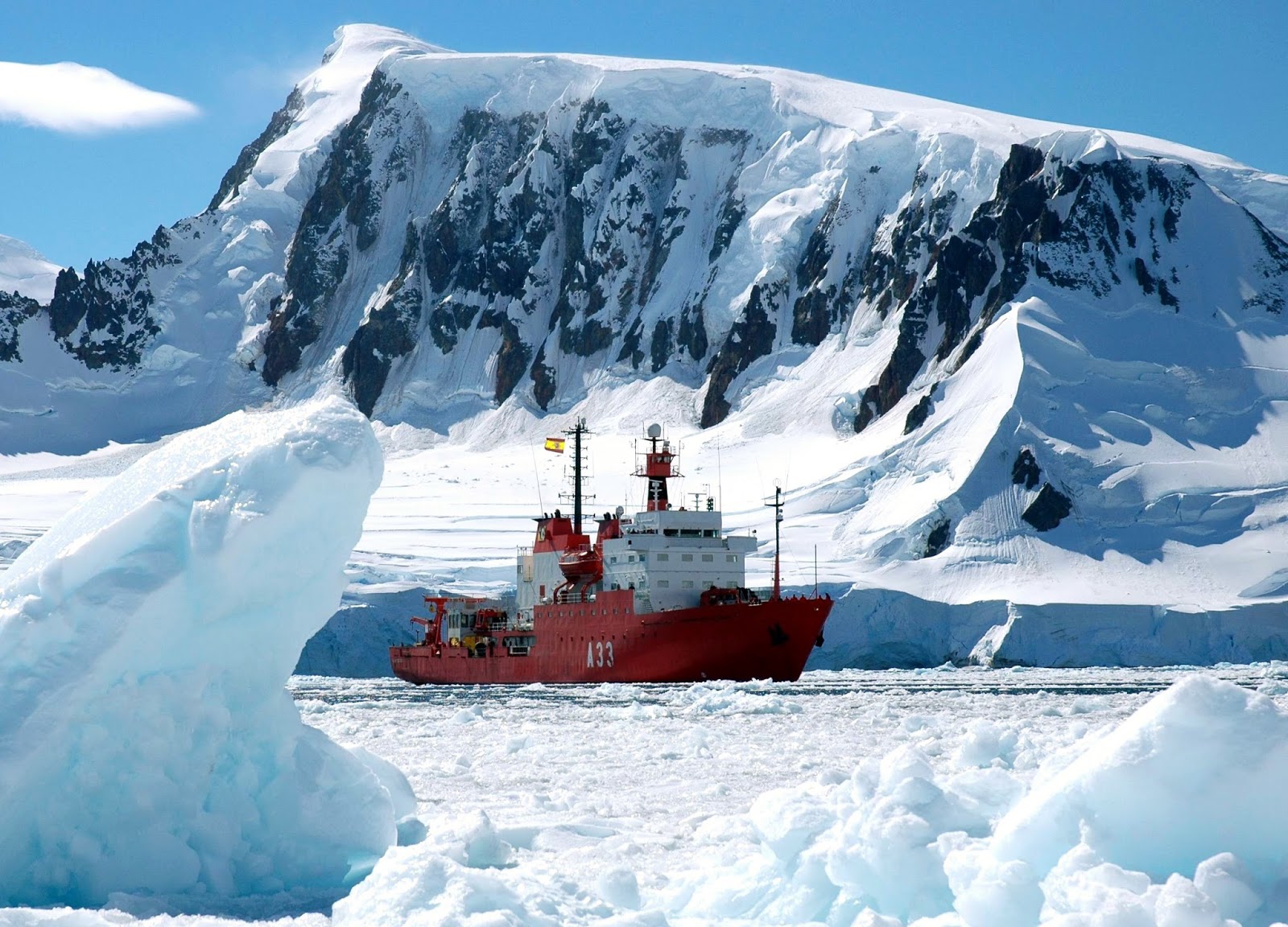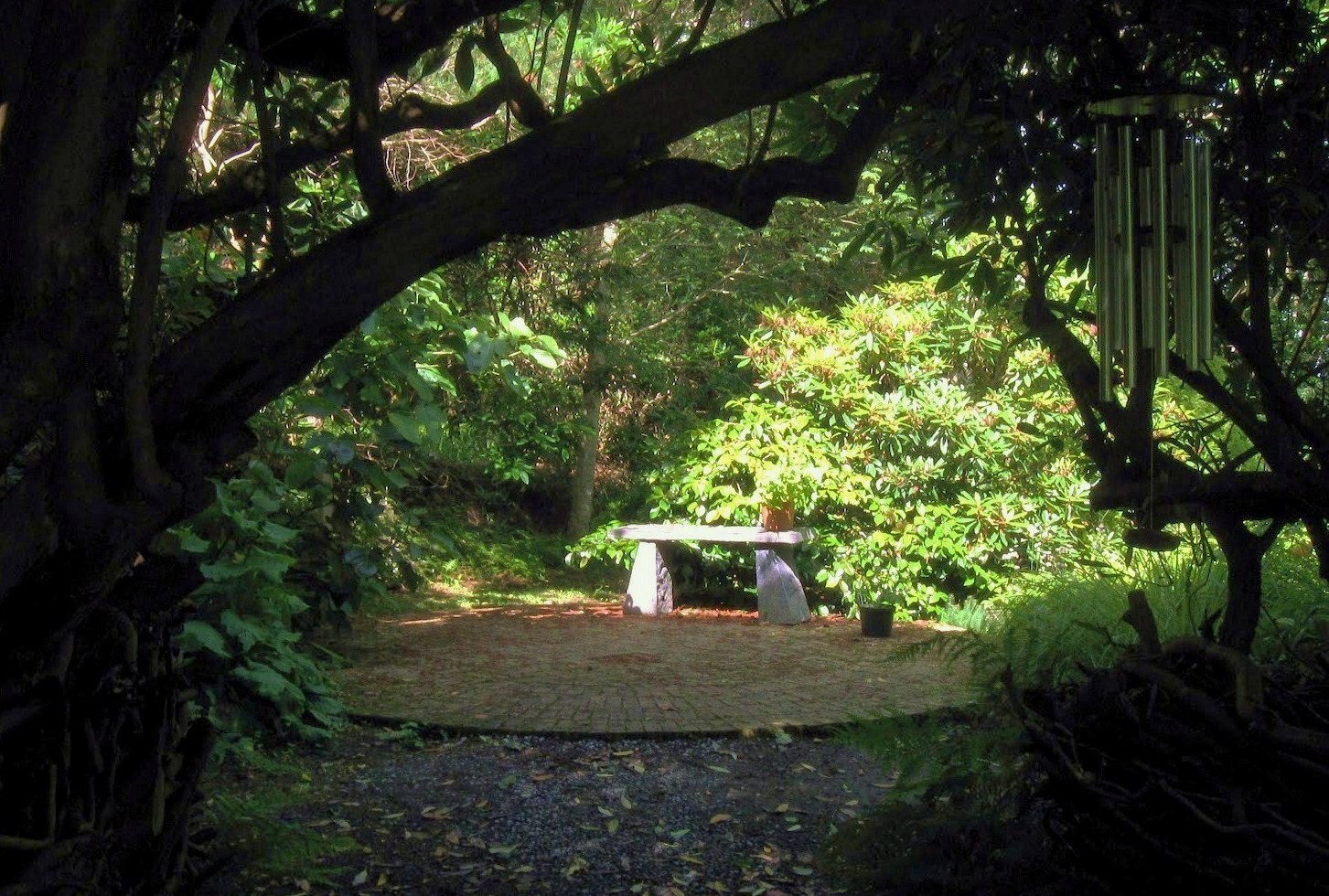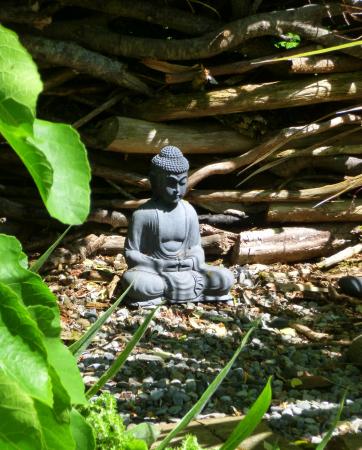The islands and islets along the west coast of Antarctic Peninsula, on the tumultuous waters of the Drake Passage, are home to a number of stations from several countries, making this the most densely populated part of the continent, despite being still an immense desert of ice and rock.
One of the South Shetland islands has been chosen by two nations - Spain and Bulgaria, two distant European countries - to build their stations in close vicinity: Livingston Island.
Livingston Island is the second largest island in the South Shetland archipelago. Its irregular shape is 73 km long for 5 km (min.) to 34 km (max.) wide.
Coordinates: 62° 36′ S, 60° 30′ W
Hannah Point, the west point of South Bay.
Ice cliffs, sharp rocky peninsulas, beaches, coves and bays form most of the coastline. Except for isolated patches by the shoore, the land surface is covered by an ice cap, highly crevassed in some areas, with ice domes and plateaus and a number of valley glaciers.
In winter, temperatures drop to around -25º C, and in summer they rise to an average 2º C, when the majority of snow on site melts. Strong winds buffet the stations, often exceeding 160 Km/h.
The two stations, just 2.7 km apart (5.5 km route), are located in Hurd Peninsula, facing South Bay and Hannah Point, in small ice-free strips by the shore framed by several glacier mouths. South Bay is a 12 km wide bay in the south coast of the island. The area was known before by whalers which used it as a safe haven.
Spanish Antarctic Base 'Juan Carlos I' sits in Hurd Peninsula, 40 m from the shore.
Coordinates: 62°39′ S, 60°23′ W
Occupation: up to 24 places,
from November to Mars
(austral summer)
Inaugurated in 1988, the base was built using container modules and igloo-tent accommodation.
The recently renovated base comprises habitation and science units and a series of support modules for services and storage. The main building comprises three wings of accommodation arranged around a central core while the science building is a separate structure far enough away to provide a refuge in case of a major fire.
The main building provides accommodation for 24 people, with the option to increase the population to 48 in the future. The orientation of the buildings makes best use of the site topography, with windows framing wonderful views of the surrounding land and seascapes.
'Española cove', seen from up the hills behind - the station his hidden by the rock, where the arrow points.
Byers Camp (acampamento)
an extension of Base Juan Carlos I.
A mainly ice-free ground, Byers Peninsula forms the west end of the Island. On the south of the Peninsula, a large bay called 'South Beach' is the location of the camp.
It consists of two igloo-type shelters, one for eating and cooking, the other working as a scientific lab open to international crews.
- Spanish Antarctic supporting ships - (buques).
The 'Las Palmas' under bad weather in Drake Passage.
Buque Las Palmas was launched in 1978, the first ship to participate in the Spanish Antarctic campaigns. She has been later reinforced to navigate in iced waters.
The 'Las Palmas' is mainly as a logistic support vessel, while the more recent and strong BIO Hespérides (A33), prepared for ice-breaking, is dedicated to scientific work.
The Spanish Navy 'Hespérides' (1991), 2.830 tons, 82,5 meters .
Antarctic mail from 'Juan Carlos I ' base.
------------------------------------------------
The 'Johnson Glacier' flows between the two stations, and slides into 'Johnsons Dock', a kind of wide fiord.
The Bulgarian Antarctic Base “St. Kliment Ohridski” (BAB) is less than 6 km North of the Spanish station.
Coordinates: 62º 38' S, 60º 21' W, at the Eastern Coast of South Bay.
Occupation: ~ 25 people during the austral summer (November to March)
St. Kliment Ohridski Base (Bulgarian: База св. Климент Охридски) was named in 1993 for St. Clement of Ohrid (840-916), a medieval scholar, writer, priest and saint.
The main building was built in 1998 and is made of wooden panels; it includes living room, kitchen, doctor's office, storage room and two bedrooms.
Snow mobiles are welcome equipment for the scientific crew.
St. Ivan Rilski chapel (interior), built in 2012.
The supplies and the transport of the Bulgarian crew are provided by the Spanish Navy ships.
---------------------------------------------
There are plenty of nunataks in Livingston Island. A nunatak is an exposed rocky peak of a ridge or mountain, not covered with ice, within an ice cap.
There are plenty of nunataks in Livingston Island. A nunatak is an exposed rocky peak of a ridge or mountain, not covered with ice, within an ice cap.
Helis Nunatak (Nunatak Helis) is a crown-shaped rocky peak located at 62° 32′ S, 60° 04′ W, in the eastern side of the island.
The peak is named after the ancient Thracian capital town of Helis, whose remains can be found at Sveshtari, Bulgaria.
The peak is named after the ancient Thracian capital town of Helis, whose remains can be found at Sveshtari, Bulgaria.
Aheloy Nunatak
Edinburgh Hill
A rocky 390 m peak in central Livingston, right on the ice cap's Huron Glacier
Edinburgh Hill is a rocky hill of elevation 180 m on the east coast of Livingston, at Varna Peninsula by McFarlane Strait.
The area was known by early 19th century sealers and whalers.
An Antarctic sunset
viewed from the Bulgarian station.


















































































